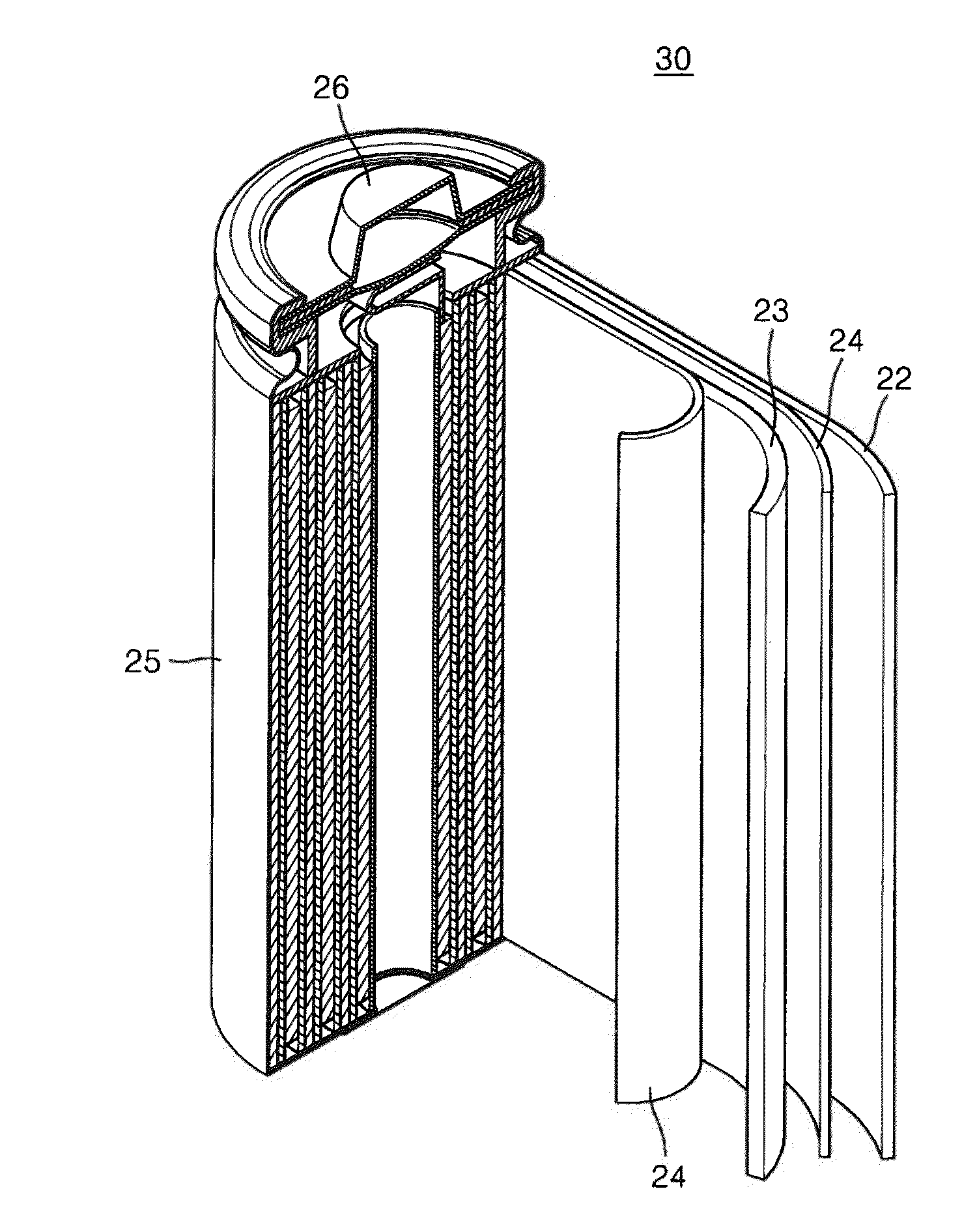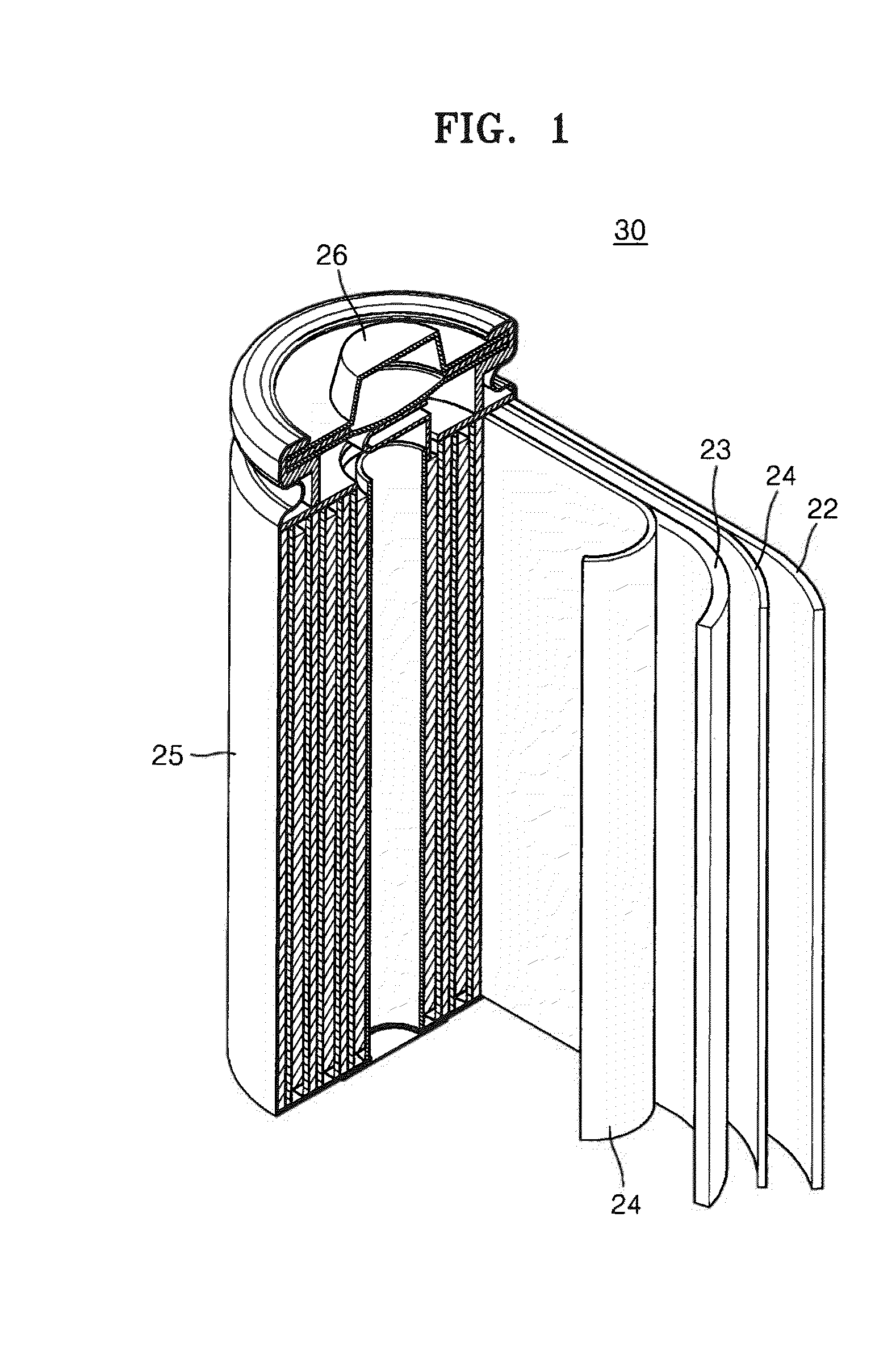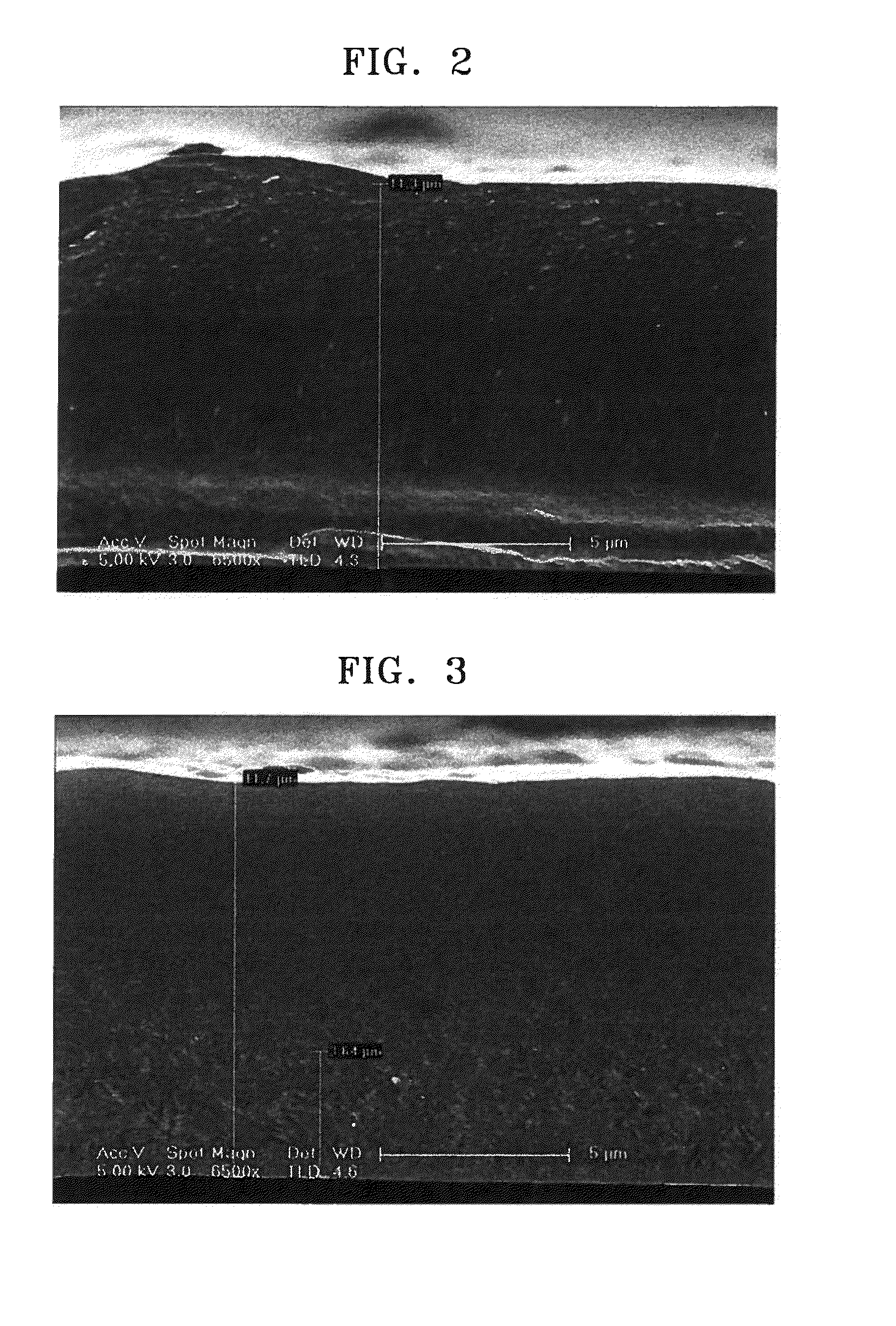Negative active material, lithium battery including the material, and method for manufacturing the material
a negative active material and lithium battery technology, applied in the direction of cell components, final product manufacturing, sustainable manufacturing/processing, etc., can solve the problem of rapid degradation of capacity, and achieve the effect of improving capacity and lifespan characteristics of lithium batteries, inhibiting (or reducing) volumetric expansion
- Summary
- Abstract
- Description
- Claims
- Application Information
AI Technical Summary
Benefits of technology
Problems solved by technology
Method used
Image
Examples
example 1
[0107]Si, Ti, and Ni were mixed in an atomic weight ratio of 68:16:16 (Si:Ti:Ni) and the mixture was added to a vacuum induction melting furnace (Yein Tech., Korea). The inside of the vacuum induction melting furnace was vacuumized using a vacuum pump, and Ar that is an inert gas was injected thereinto. A master alloy was prepared using a high frequency applying device while maintaining a power output of 8 kW for less than 5 minutes and monitoring the melting of the alloy. The atomic ratio of a matrix in the master alloy was Si7Ti4Ni4, and the remaining 40 at % of silicon that was not contained in the matrix was precipitated and distributed in the matrix of the master alloy as nanoparticles.
[0108]The prepared master alloy was cut into large lumps and added to an injection-molding pipe of a melt spinner (Yein Tech., Korea), and then the master alloy was melted by high frequency induction heating in an Ar gas atmosphere, injection-molded to a ribbon shaped alloy by ejecting the melts ...
example 2
[0118]A negative active material slurry was prepared by mixing the negative active material prepared in Example 1, LSR7 (including 23 wt % of PAI and 97 wt % of N-methyl-2-pyrrolidone, Hitachi Chemical) as a binder, ketjen black as a conductive agent at a weight ratio of 84:4:8 and adding N-methylpyrrolidone to the mixture to adjust viscosity until a solid content thereof reached 60 wt %. The prepared slurry was coated on a copper foil current collector having a thickness of 10 μm to manufacture a negative electrode plate. The completely coated electrode plate was dried at a temperature of 110° C. for 15 minutes, followed by pressing, thereby completing the manufacture of a negative electrode having a density of 1.5 g / cc. The dried negative electrode plate was heat-treated in a vacuum at 350° C. for 1 hour, and the electrode plate was cut to a size of 16 mm to prepare a negative electrode to be applied to a coin cell. A Li metal as a reference electrode and a polyethylene separator ...
PUM
| Property | Measurement | Unit |
|---|---|---|
| particle size | aaaaa | aaaaa |
| particle size distribution | aaaaa | aaaaa |
| temperature | aaaaa | aaaaa |
Abstract
Description
Claims
Application Information
 Login to View More
Login to View More - R&D
- Intellectual Property
- Life Sciences
- Materials
- Tech Scout
- Unparalleled Data Quality
- Higher Quality Content
- 60% Fewer Hallucinations
Browse by: Latest US Patents, China's latest patents, Technical Efficacy Thesaurus, Application Domain, Technology Topic, Popular Technical Reports.
© 2025 PatSnap. All rights reserved.Legal|Privacy policy|Modern Slavery Act Transparency Statement|Sitemap|About US| Contact US: help@patsnap.com



